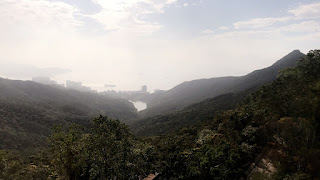Over the years, the press and the United States government have had multiple occasions of knocking heads with each other. Due to vastly different cultures, cultures that clash and conflict with each other, a tense relationship has formed between the two with characteristics and traits of the relationship being categorized as transhistorical; not limited to one historical period but has existed throughout human history.
The government’s job has always been to make sure that the nation it governs is safe and secure while the job of the press is to get the truth out to the public and keep people informed about what is going on in their nation. In the interest of the First Amendment, the United States courts have “held that the press has a ‘watchdog’ role over the government and is not subject to prior restraint or registration.”
As the “watchdog,” the press works hard to keep an eye on government activities, making sure they withhold no secrets from the public. However, in the interest of national safety, the government does whatever it takes to keep secrets from the public. This includes creating new laws to restrain the press from spilling private government information, but by doing so, the government is violating the Freedom of the Press Clause in the First Amendment: “Congress shall make no law…abridging the freedom…of the press.” This clause states that even if it is important information to the government, any person can publicize law-abiding knowledge in the absence of government penalization.
Isn’t freedom of the press a key ingredient in any successful democracy? Yet, the United States government has made countless attempts to take away this freedom by challenging the constitutional rights of its citizens, and as a result, many disputes have arisen. In the Declaration of Independence, it is stated that “Governments are instituted among Men, deriving their just powers from the consent of the governed.” This fundamental rule lays out the importance and power that the people have over the government. The government’s source for all of its power is the people! So when the First Amendment also states “the right of the people to petition the government for a redress of grievances,” it is saying that if the people don’t like or agree with how the government is running things then they have the right to speak up and change it! The ability to express opinions and take action against the government is a constitutional right of the American people, and for a long time now, the press has been able to assist the American people in doing so by being the main channel for public discourse, relaying messages from the people to the government. However, some have taken advantage of this by using the media to sway people towards a certain political opinion.
In the movie Good Night and Good Luck, which takes place during the 1950s, we are given a look at the relationship between the government and the press. A democracy and journalism.
During this time, the Red Scare was occurring in the United States and mass hysteria was transpiring as a result of recognized Communist threats during the Cold War between the United States and the Soviet Union. In the movie, U.S. Senator Joseph R. McCarthy accuses countless federal employees of being disloyal to the government, claiming they are Communist spies. These types of people were referred to as “Reds.” However, when broadcast journalist Edward R. Murrow becomes aware of this, he feels that McCarthy is wrongfully accusing innocent people and decides to take immediate action to expose McCarthy on a television show. Although this didn’t turn out exactly how Murrow wanted it to and gets accused of being a member of the Communist Party, he was ultimately successful in his desire to lift awareness.
Edward R. Murrow was a voice that was suppressed. Just like the antiwar voices in the press during the Civil War era where Abraham Lincoln brought terror into the eyes of reporters by taking drastic measures to arrest editors and suppress countless newspapers. Nevertheless, the tense relationship between the government and the press depicted throughout this movie helped me see how relevant their relationship is today. Events like these are still occurring and people like Julian Assange are arrested and seen as criminals for exposing the truth. Assange is referred to as a whistleblower for releasing confidential but UNJUST government information relating to the Iraq War. Whistleblowers are very disliked by the U.S. government and have been for a long time. Even though some see them as heroes, the government looks at them as traitors and have put them through many unfair forms of punishment.
It absolutely baffles me that the first amendment doesn’t protect people like Julian Assange against these punishments nor did it in the past. It is obvious that too much power can make someone use it in the most unethical ways and with technology and social media progressing and advancing, it might only get worse.























